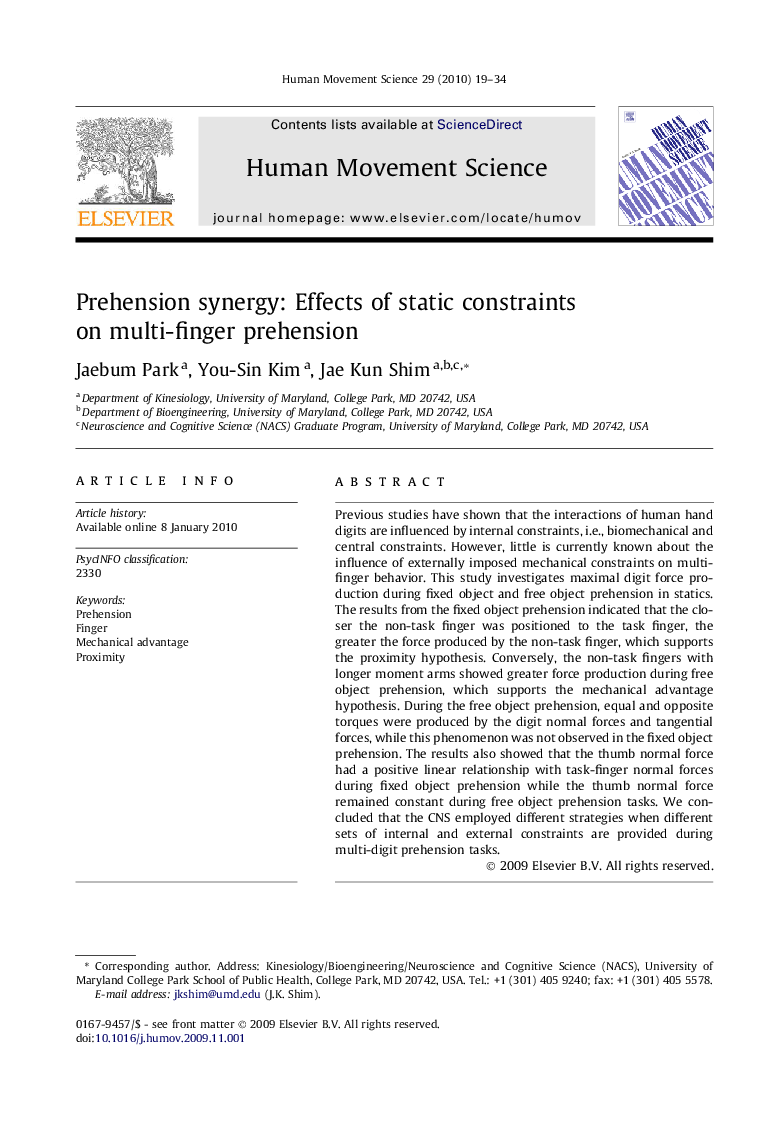| Article ID | Journal | Published Year | Pages | File Type |
|---|---|---|---|---|
| 928738 | Human Movement Science | 2010 | 16 Pages |
Previous studies have shown that the interactions of human hand digits are influenced by internal constraints, i.e., biomechanical and central constraints. However, little is currently known about the influence of externally imposed mechanical constraints on multi-finger behavior. This study investigates maximal digit force production during fixed object and free object prehension in statics. The results from the fixed object prehension indicated that the closer the non-task finger was positioned to the task finger, the greater the force produced by the non-task finger, which supports the proximity hypothesis. Conversely, the non-task fingers with longer moment arms showed greater force production during free object prehension, which supports the mechanical advantage hypothesis. During the free object prehension, equal and opposite torques were produced by the digit normal forces and tangential forces, while this phenomenon was not observed in the fixed object prehension. The results also showed that the thumb normal force had a positive linear relationship with task-finger normal forces during fixed object prehension while the thumb normal force remained constant during free object prehension tasks. We concluded that the CNS employed different strategies when different sets of internal and external constraints are provided during multi-digit prehension tasks.
